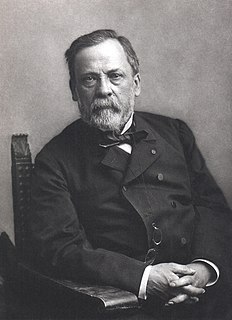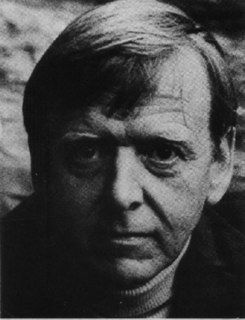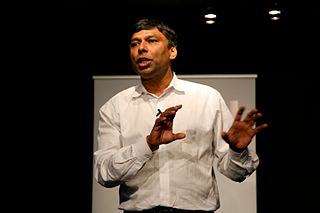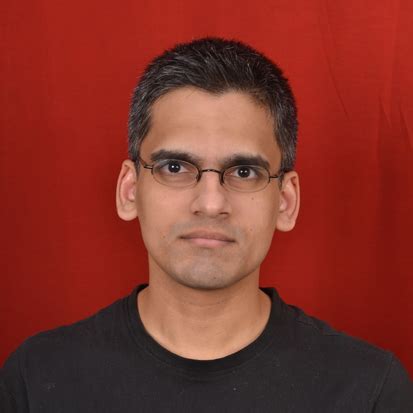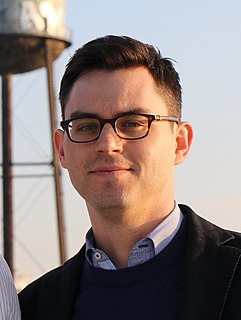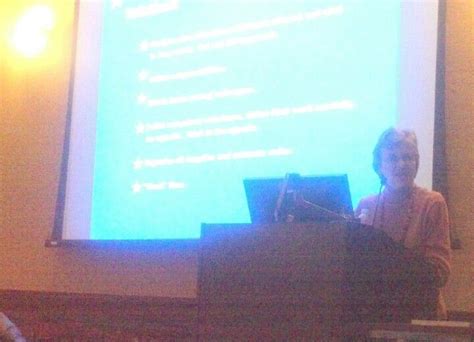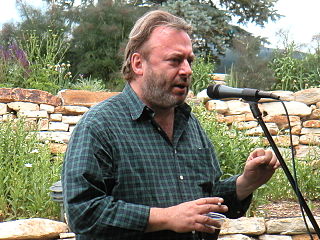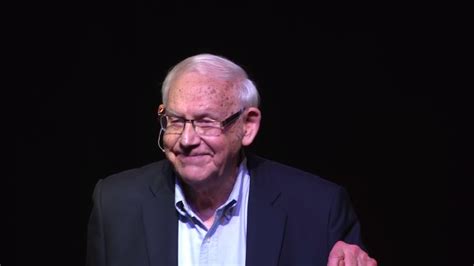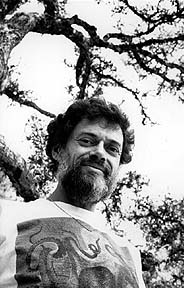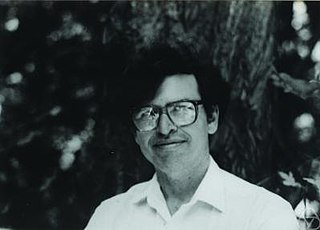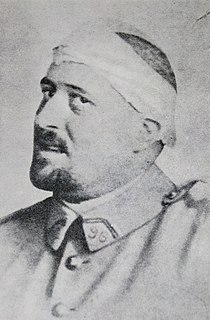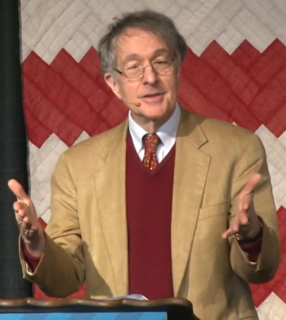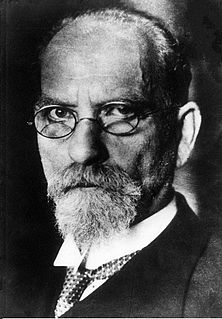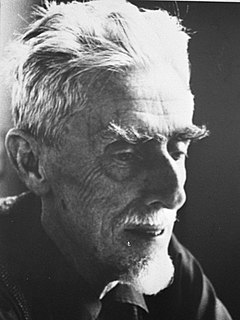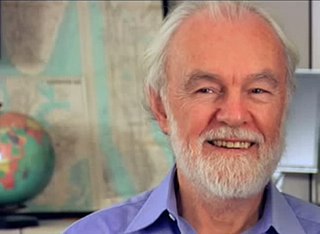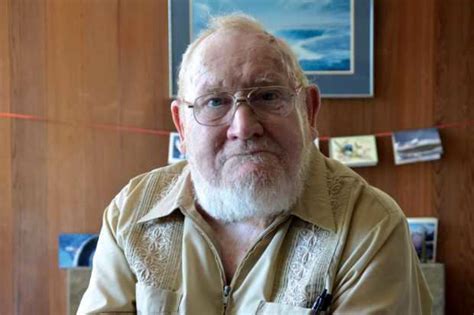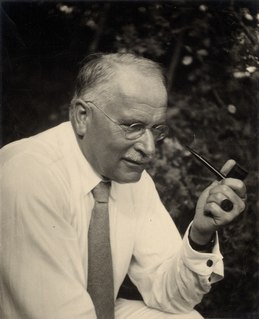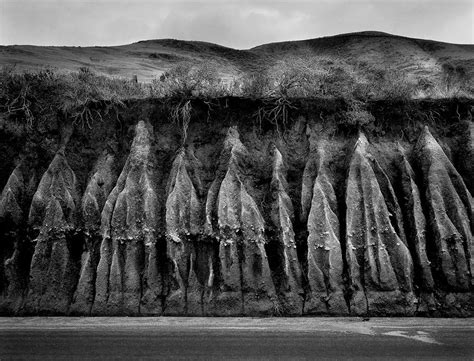Top 119 Spatial Quotes & Sayings - Page 2
Explore popular Spatial quotes.
Last updated on April 20, 2025.
Every chemical substance, whether natural or artificial, falls into one of two major categories, according to the spatial characteristic of its form. The distinction is between those substances that have a plane of symmetry and those that do not. The former belong to the mineral, the latter to the living world.
American intelligence and military agencies have a huge footprint in terms of how the world works, but they're largely invisible. I'm interested in exploring those 'geographies' of secrecy from many different angles: political, legal, economic, spatial, etc., because I am fundamentally just interested in how the world works and how societies work.
The ensouled is distinguished from the unsouled by its being alive. Now since being alive is spoken of in many ways, even if only one of these is present, we say that the thing is alive, if, for instance, there is intellect or perception or spatial movement and rest or indeed movement connected with nourishment and growth and decay. It is for this reason that all the plants are also held to be alive . . .
In the context of the kind of infrastructure space I'm looking at, I'm making a very unlikely argument by saying that all the stuff that's repeated, from spatial products to whole cities, which looks so daunting to architects, might be especially empowering. At this moment, it might be harder to make a meaningful object form alone, but easier to make an active form that can piggyback on those multipliers to recondition spaces in a politically significant way.
My central thesis is that combining increased temporal and spatial resolution in MRI techniques with increasingly powerful data correlation techniques will allow the derivation of interpreted meanings from neural signals. I observed, further, that the techniques that exist already allow some correlations.
Conscious mind is a spatial analog of the world and mental acts are analogs of bodily acts. Consciousness operates only on objectively observable things. Or, to say it another way with echoes of John Locke, there is nothing in consciousness that is not an analog of something that was in behavior first.
Just think of the opportunities we can unlock by making education as addictive as a video game. This type of experiential, addictive learning improves decision-making skills and increases the processing speed and spatial skills of the brain. When was the last time your child asked for help with a video game?
We invent mind-space inside our own heads as well as the heads of others ... we assume these 'spaces' without question. They are a part of what it is to be conscious. Moreover, things that in the physical-behavioural world that do not have a spatial quality are made to have such in consciousness. Otherwise we cannot be conscious of them.
Rather than asking architecture to be more interdisciplinary - a perennial issue within the discipline - I am suggesting that other disciplines might exploit the powers of architecture and urbanism. When addressing urgent situations, whether it's the depletion of the rainforest or abuse of labor, well-meaning people are working with tools, like standards, that seem like very blunt instruments. I am suggesting that spatial variables that are underexploited in governance might add to that repertoire.
I don't know if God exists and I don't care. God's will and design for this temporal and spatial vastness, if any, is so patently, deliberately impenetrable that I doubt any mortal has a grasp on it. The very inexplicability of sad events like the tsunami, like the AIDS crisis or even like the cancer death of the father of one of my daughter's 2nd-grade classmates last week are, to me, reminders to focus on our obligations to one another, not to the infinite; to honor the creator, if any, by honoring creation itself and hoping that's good enough.
When I climb into my car, I enter my destination into a GPS device, whose spatial memory supplants my own. I have photographs to store the images I want to remember, books to store knowledge and now, thanks to Google, I rarely have to remember anything more than the right set of search terms to access humankind's collective memory.
I wrote a piece from North Korea called Visit to a Small Planet which is a line I stole from a play of Gore Vidal's, because it did seem to me as if I had left this planet completely to go on this visit to the northern part of the Korean Peninsula, and it was as if coming back from another spatial body altogether.
The ways in which acquired savants show up are usually the same ways that congenital, or non-acquired, savant syndrome shows up. They tend to show up in the same areas: music, art, math, visual, spatial skills, and calendar calculating, although calendar calculating probably isn't quite as prominent in that group. They tend to show up quite quickly, or sort of explode on the scene and they then tend to have an obsessive sort of forceful quality about them in the same way as savant skills. So they tend to show up in the same ways.
We are somehow the children of the planet, we are somehow its finest hour; we bind time, we bind the past, we anticipate the future - we are going hyper-spatial; we are claiming a whole new dimension for biology that it never claimed before. We are actually becoming a fourth-dimensional kind of creature. Our future is somehow with us, as we seem to be able to move through metamorphosis into our own imaginations - a super civilization spread throughout space and time. Our future is a mystery, our destiny is to live in the imagination.
We humans have a wide range of abilities that help us perceive and analyze mathematical content. We perceive abstract notions not just through seeing but also by hearing, by feeling, by our sense of body motion and position. Our geometric and spatial skills are highly trainable, just as in other high-performance activities. In mathematics we can use the modules of our minds in flexible ways - even metaphorically. A whole-mind approach to mathematical thinking is vastly more effective than the common approach that manipulates only symbols.
What has soul in it differs from what has not, in that the former displays life. Now this word has more than one sense, and provided any one alone of these is found in a thing we say that thing is living. Living, that is, may mean thinking or perception or local movement and rest, or movement in the sense of nutrition, decay and growth. Hence we think of plants also as living, for they are observed to possess in themselves an originative power through which they increase or decrease in all spatial directions.
In systemic searches for embryonic lethal mutants of Drosophila melanogaster we have identified 15 loci which when mutated alter the segmental patterns of the larva. These loci probably represent the majority of such genes in Drosophila. The phenotypes of the mutant embryos indicate that the process of segmentation involves at least three levels of spatial organization: the entire egg as developmental unit, a repeat unit with the length of two segments, and the individual segment.
The new painters do not propose, any more than did their predecessors, to be geometers. But it may be said that geometry is to the plastic arts what grammar is to the art of the writer. Today, scholars no longer limit themselves to the three dimensions of Euclid. The painters have been lead quite naturally, one might say by intuition, to preoccupy themselves with the new possibilities of spatial measurement which, in the language of the modern studios, are designated by the term fourth dimension.
A near win shifts our view of the landscape. It can turn future goals, which we tend to envision at a distance, into more proximate events. We consider temporal distance as we do spatial distance. (Visualize a great day tomorrow and we see it with granular, practical clarity. But picture what a great day in the future might be like, not tomorrow but fifty years from now, and the image will be hazier.)
Chimpanzees are incredibly intelligent. They can learn more than 400 signs of American Sign Language. They have memories for spatial distribution, like numbers on a TV screen, way better than ours. You come onto the emotions: happiness, sadness, fear, and despair - all the things for which I was accused of being anthropomorphic when I ascribed them to chimpanzees.
We are the only major developed nation that isn't investing meaningfully in high-speed rail, and I believe we're making a mistake. Transportation systems that are fast and efficient and environmentally clean are going to enable the formation of these new mega-regions, the heart of the spatial fix. We need to be able to accelerate the movement of people, goods, and services - the very movement of ideas, knowledge, and creativity - between our major population centers. We have to build these links.
What differentiates time from space is that time does have a direction. In that sense it is different from space. I think that's certainly true that whereas spatial dimensions don't have direction or an arrow, time does. It runs from past to future. But I see that arrow of time as rooted in a deeper metaphysical reality, namely the reality of temporal becoming - of things coming to be and passing away. That is why time has this arrow. But it's not sufficient to simply say that time and space are distinct because time has a direction. The question will be: why does it have a direction?
The building art is, in reality, always the spatial execution of spiritual decisions. It is bound to its times and manifests itself only in addressing vital tasks with the means of its times. A knowledge of the times, its tasks, and its means is the necessary precondition of work in the building art.
We of course have our problems, to say the least, in comportment towards ourselves and our environment, but admittance to the cosmos and the spatial infinity and temporal immortality it provides may well be just the remedy for these age-old problems. Access to the boundless resources of the universe may once and for all puncture the pressure of population and politics of scarcity which have generated war, oppression, and plagued our species from the start.
I could not help feeling that they were evil things-- mountains of madness whose farther slopes looked out over some accursed ultimate abyss. That seething , half-luminous cloud-background held ineffable suggestions of a vague, ethereal beyondness far more than terrestrially spatial; and gave appalling reminders of the utter remoteness, separateness, desolation, and aeon-long death of this untrodden and unfathomed austral world.
I try in my prints to testify that we live in a beautiful and orderly world, not in a chaos without norms, even though that is how it sometimes appears. My subjects are also often playful: I cannot refrain from demonstrating the nonsensicalness of some of what we take to be irrefutable certainties. It is, for example, a pleasure to deliberately mix together objects of two and three dimensions, surface and spatial relationships, and to make fun of gravity.
What sets imperialism of the capitalist sort apart from other conceptions of empire is that it is the capitalist logic that typically dominates, though ... there are times in which the territorial logic comes to the fore. But this then poses a crucial question: how can the territorial logics of power, which tend to be awkwardly fixed in space, respond to the open spatial dynamics of endless capital accumulation? And what does endless capital accumulation imply for the territorial logics of power?
Already, new forms of short-term and long-term rental housing are popping up in some metro areas. You can take on a house or apartment for a few months or even a year or two in developments that are striving to provide critical elements of community - schools, healthcare, social and cultural institutions - even for people who are living there only temporarily. People invested in a home, mortgage, or community are less likely to move to more economically vibrant locales. That kind of entrenchment is going to be an impediment to the coming spatial fix.
Much of the geographical work of the past hundred years... has either explicitly or implicitly taken its inspiration from biology, and in particular Darwin. Many of the original Darwinians, such as Hooker, Wallace, Huxley, Bates, and Darwin himself, were actively concerned with geographical exploration, and it was largely facts of geographical distribution in a spatial setting which provided Darwin with the germ of his theory.
I can only gaze with wonder and awe at the depths of and heights of our psychic nature. Its non-spatial universe conceals an untold abundance of images which have accumulated over millions of years of living development and become fixed in the organism....Beside this picture I would like to place the spectacle of the starry heavens at night, for the only equivalent of the universe within is the universe without; and just as I reach this world through the medium of the body, so I reach that world through the medium of the psyche.
Two aesthetics exist: the passive aesthetic of mirrors and the active aesthetic of prisms. Guided by the former, art turns into a copy of the environment's objectivity or the individual's psychic history. Guided by the latter, art is redeemed, makes the world into its instrument, and forges, beyond spatial and temporal prisons, a personal vision.
I think grief is a huge subject; it's one of the things that everybody is going to confront in one way or another. There's been a lot of books written about how Americans have an odd way of trying to defer grief or minimize the need to grieve. People used to have a lot more ritual grief in their lives. For the most part, we think of it as a strictly temporal process: you grieve for a time and then you're over [it], but it's also a spatial process. It travels across a map.
tend to be better at describing feelings and ideas, and worse at painting a picture of any physical thing. I have terrible spatial reasoning skills so even if I were describing my girlfriend, whom I see every day, it sound like I was talking about a child's drawing of her. "Very beautiful. Glasses. Brown hair. Super smart brain. Bigger than our dog. Smaller than me".
A [spatial, temporal] work had only to be exhibited in a gallery and then written about and reproduced as a photograph in an art magazine. Then this record of the no longer extant installation, along with accretions of information after the fact, became the basis for its fame, and to a large extent its economic value.
There's spatial intelligence. they're, which end up being, people going into math or music. there's mechanical where you work well with your hands. There's an intelligence with language that would lead someone into writing. So it's not necessarily that you're six years old and you know you're going to be a lawyer Or you're going into tech startups or computers. It's something more elemental than that. It's that this is a skill, a way of thinking that comes naturally to me that I was drawn to and it was very clear in childhood.
It wasn't an architect who did this, but if it had been an architect, it would have been a good day's work: there was a marketing person who convinced Walmart that their products sold better in daylight than electric light. It would have been interesting if an architect had deliberately designed this change with all its spatial consequences in mind, thinking about how the change would multiply across all the square footage of all the roofs of all the Walmarts in the world. It would have been a beautiful trick - a physical, practical, political pleasure.
As I became aware that all things have unique spatial and temporal qualities which visually define and relate them, I began to perceive the things I was photographing not as objects but as events. Working to develop my skills of perceiving and symbolizing these event qualities, I discovered the principle of opposites. When, for example, I photographed the smooth, luminous body of a woman behind a dirty cobwebbed window, I found that the qualities of each event were enhanced and the universal forces which they manifested were more powerfully evoked.
...to characterize the import of pure geometry, we might use the standard form of a movie-disclaimer: No portrayal of the characteristics of geometrical figures or of the spatial properties of relationships of actual bodies is intended, and any similarities between the primitive concepts and their customary geometrical connotations are purely coincidental.
Places are fragmentary and inward-turning histories, pasts that others are not allowed to read, accumulated times that can be unfolded but like stories held in reserve, remaining in an enigmatic state, symbolizations encysted in the pain or pleasure of he body. 'I feel good here': the well-being under-expressed in the language it appears in like a fleeting glimmer is a spatial practice.

